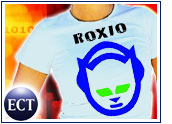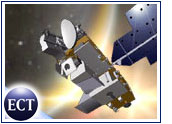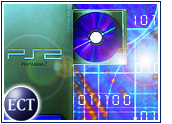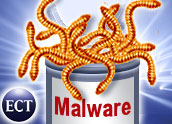
The original Napster software emerged and blossomed on university campuses, so it seems only appropriate that one of Roxio’s first strategic steps with Napster 2.0 would be to return to the university — this time with a legal system that will provide music to students and faculty at Penn State University.
Speaking in California at the annual Educause meeting of thousands of IT administrators from universities around the country, Penn State president Graham Spanier said the university has signed an agreement with Napster to launch a program in which Penn State will make Napster’s Premium Service available at no cost to its students.
Napster will offer those students unlimited streaming and “tethered downloads” from a digital library of some 500,000 songs, as well as 40 streaming radio stations, access to six decades of Billboard chart data, an online magazine and community features. Students also can purchase permanent downloads that can be burned to CDs or transferred to portable devices for 99 cents each.
“This will be the first step in a new, legal approach designed to meet student interest in getting extensive digital access to music,” Spanier said. “We have already set up student focus groups at Penn State who have been testing the Napster service. We will essentially deploy thousands of testers in the spring semester to use this program and give us feedback before we roll it out for even wider student use in the fall of 2004.”
Legit Market Thriving
Spanier is serving as cochair of the Committee on Higher Education and the Entertainment Industry, along with Cary Sherman, president of the Recording Industry Association of America (RIAA). The committee’s efforts in the past year have focused on legal, educational, legislative and moral issues related to illegal peer-to-peer file sharing.
“The Napster 2.0 premium service is designed to meet the needs of students who have demonstrated a voracious appetite for online music,” said Napster president and COO Mike Bebel. “Napster has improved upon the typical file-sharing experience by delivering guaranteed high-quality tracks, a well-organized presentation of music, and community features that music fans love.”
Penn State has demonstrated critical leadership in this area and is paving the way for universities around the country to ensure that a legitimate marketplace for online music thrives, said Bebel.
The program will be phased in beginning January 12th, the first day of classes for Penn State’s spring semester. The Penn State-Napster agreement, and other similar arrangements expected to be inked by universities around the United States, could significantly change the way college students obtain and listen to music through streaming audio and file downloads.
Students, Faculty and Beyond
The spring rollout will provide access to Napster for about 18,000 Penn State students who live on Penn State campuses in residence halls, including the main campus at University Park. Penn State has 83,000 students on its 24 campuses. It intends to make Napster available to all eligible students, as well as to faculty and staff, next fall.
“Another goal of our partnership is to extend the music service to members of our alumni association,” Spanier said. “With nearly 150,000 dues-paying members, Penn State’s alumni association is the largest in the country, and it would be great to also provide them low-cost access to music. There will be no additional costs to students for this service. It will be funded as part of the information technology fee that Penn State already has in place.”
Several universities are expected to launch similar pilot studies with various digital music providers in the coming months. Over time, these initiatives could substantially curb the nationwide problem of illegal sharing of copyrighted files over high-speed college data networks.
The new concept is similar in approach to another venture Penn State launched five years ago called the Student Newspaper Readership Program. Penn State developed that program to provide all students with free access to newspapers. Since that time, hundreds of other colleges and universities around the United States have launched similar readership programs.
Some for Free, All for Price
Here is how the Penn State Napster program will work: Students living in residence halls at a dozen Penn State campuses will be able to participate initially.
“Penn State and Napster will treat this spring as an experimental period, focusing on those students who live on campus,” Spanier said. “We want to understand the impact this may have on our bandwidth, how to optimize our network to accommodate student needs, how to provide the best possible service, and how Napster can further tailor the service to enhance the higher education market.”
By next fall, said Spanier, further system enhancements will be in place, and students living off campus also will be able to participate. “Intellectual property issues are important to us in higher education, and we think much of the problem of music piracy can be solved by what is learned over the next year by such partnerships.”





















































